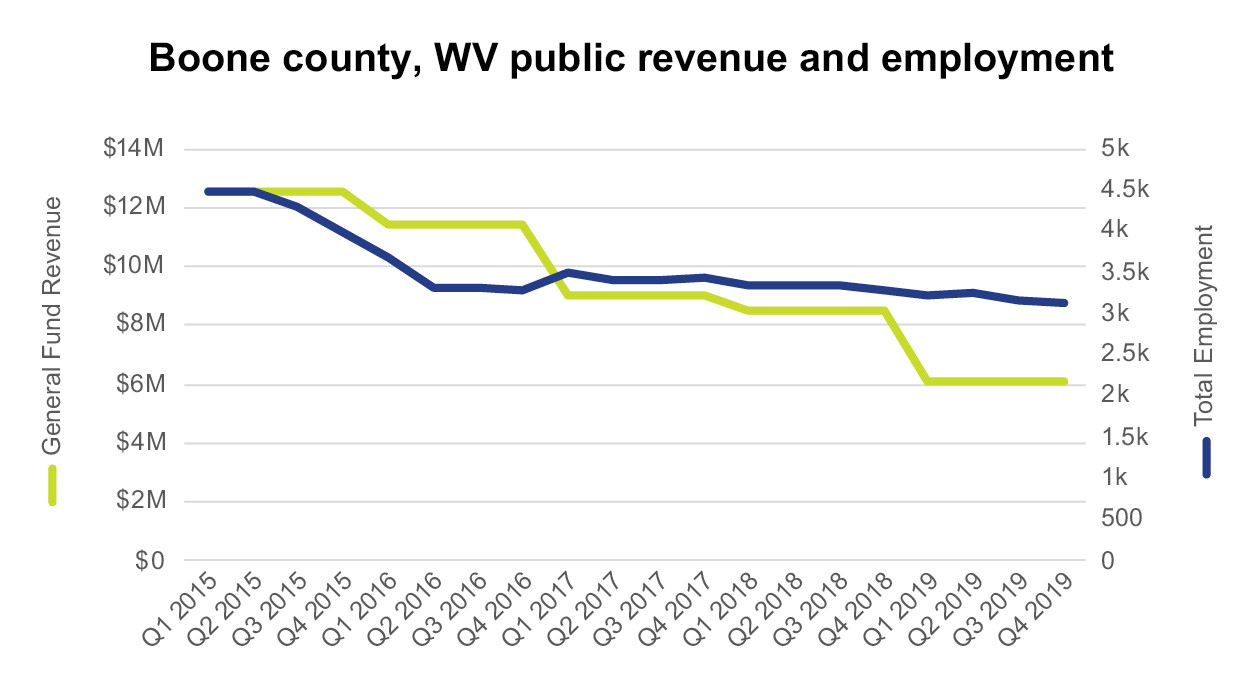 (This post was co-written by Mandy Warner)
(This post was co-written by Mandy Warner)
Two new analyses show significant opportunities for Pennsylvania under environmental protections that are compatible with the Regional Greenhouse Gas Initiative – commonly known as RGGI.
RGGI is a collaboration of nine northeast states that is designed to lower carbon pollution from the power sector. Pennsylvania Governor Tom Wolf signed an historic executive order last month directing the state’s Department of Environmental Protection to develop a regulation that is compatible with RGGI. That order followed Wolf’s commitment to reducing Pennsylvania’s climate pollution by 26 percent by 2025 and 80 percent by mid-century, compared to 2005 levels.
Pennsylvania has the fifth dirtiest power sector in the nation, and the power plants operating in Pennsylvania emit more carbon pollution than all the other power plants in the nine northeastern states in RGGI combined. A binding, declining limit on carbon pollution is a necessary element of any strategy to address this problem.
Two studies underscore the value of Pennsylvania’s actions:
- EDF and M. J. Bradley & Associates released a new analysis that found there could be significant economic and emissions reduction benefits for Pennsylvania from setting a binding, declining limit on power sector carbon pollution, and creating a flexible, market-based mechanism to achieve that limit. The analysis was based on policy specifications, inputs, and assumptions developed by M.J. Bradley & Associates at the direction and on behalf of EDF, with feedback from participating stakeholder companies.
- A recent report by Resources for the Future had similar findings.
Here are five key takeaways from both of these analyses.
- Pennsylvania has a significant opportunity for cost-effective pollution abatement by limiting carbon pollution and linking with RGGI
While carbon pollution from Pennsylvania’s power sector has declined in recent years, driven primarily by market trends including cheap natural gas prices, it is projected to start increasing again. By mid-2020, under business-as-usual forecasts with no carbon limits, both analyses found Pennsylvania’s power sector carbon pollution would be more than 30 percent higher than current levels.
By setting a binding, declining limit on power sector carbon pollution and creating a flexible, market-based mechanism to achieve that limit, Pennsylvania can significantly reduce its carbon pollution at low cost.
The EDF and M.J. Bradley & Associates analysis found that linking with RGGI and designing the program in a way that ensures all electric power used in Pennsylvania is covered under the cap could lower carbon pollution by more than 35 percent and produce roughly $200 million in net savings for Pennsylvania in 2030. That’s compared to business-as-usual scenarios with no carbon limit.
The lower costs are due to reduced need for capital expenditures like building new power plants, and to declining fossil fuel costs – both driven by more of the existing nuclear fleet remaining in operation.
Resources for the Future’s analysis similarly found that linking with RGGI could lead to significant carbon pollution reductions in Pennsylvania with no observable increases in electricity prices.
Earlier studies have also demonstrated the benefits of RGGI. By driving investments in energy efficiency, RGGI has already reduced consumer energy bills, generated net economic benefits for participating states, and has produced enormous public health benefits. RGGI has helped save hundreds of lives, prevented thousands of asthma attacks, and saved billions of dollars in health-related economic costs.
According to electricity bill modeling by the Analysis Group, the average residential electricity bill in RGGI states will be 35 percent lower in 2031 than it is today, due to investments in energy efficiency.
Linking Pennsylvania with RGGI could offer further benefits – including allowing for emissions trading, which can lower total costs and make Pennsylvania’s program resilient to unexpected changes in weather or other events that could affect electricity markets while still preserving state autonomy and programs.
- Limiting carbon pollution and linking with RGGI provides support for existing and new zero-emission generation
Placing a binding, declining limit on carbon pollution – and then letting the carbon pollution limit drive a price in the energy market – provides Pennsylvania with a technology-neutral approach that ensures the most cost-effective deployment of zero-emission resources to meet the state’s climate goals.
The EDF and M.J. Bradley & Associates analysis found that under business-as-usual scenarios using EDF’s reference natural gas price assumptions, all nuclear capacity in Pennsylvania retires by 2030.
According to the analysis, linking with RGGI and designing the program in a way that ensures all electric power used in Pennsylvania is covered under the cap can help support the state’s existing nuclear fleet – retaining roughly 50 percent of the fleet in 2030.
Resources for the Future similarly found that limiting carbon pollution and linking with RGGI would forestall expected nuclear retirements, increasing Pennsylvania’s nuclear generation by up to 280 percent in 2026 relative to business-as-usual scenarios.
The natural gas prices used by Resources for the Future for their analysis are higher than currently observed, which would allow nuclear capacity to remain profitable with greater ease than may be possible with lower natural gas prices. But the preservation of existing nuclear capacity is a robust result under all scenarios that limit carbon pollution across both analyses, providing valuable insight into the role a limit on carbon pollution can play in preserving assets that are zero-emitting.
The EDF and M.J. Bradley & Associates analysis also found that linking with RGGI can increase wind and solar generation in Pennsylvania by almost 75 percent in 2030 compared to current levels. Resources for the Future found that limiting carbon pollution and linking with RGGI could generate up to 25 percent more wind and solar generation in Pennsylvania by 2026 compared to business-as-usual scenarios.
- Pennsylvania can reduce carbon pollution while increasing net exports from the state
The EDF and M.J. Bradley & Associates analysis shows that limiting carbon pollution and linking with RGGI would enable Pennsylvania to achieve its environmental objectives at low cost while at the same time increasing net exports from the state at least nine percent in 2030 compared to current levels.
Pennsylvania can also design its program to shift allowance value to producers with updating output-based allocation, which can increase gas and nuclear generation and energy exports in the state. According to Resources for the Future, the production incentive from output-based allowance allocation can increase exports from Pennsylvania above business-as-usual levels by 2026. Most of these exports are to other RGGI states so the overall pollution in the region is unaffected.
Resources for the Future also finds that using an output-based allowance allocation to non-emitting producers can provide incentives to shift generation in Pennsylvania from fossil fuel to zero-emitting sources, further decreasing carbon pollution in Pennsylvania and nationally.
- Smart policy design can amplify these benefits and further lower overall pollution
When a state or group of states puts a limit on carbon pollution, particularly in states that are served by a multi-state wholesale electricity market, emissions leakage to emitting sources that are not covered under the program is always a concern.
While both analyses demonstrate clearly that such leakage will not even come close to dwarfing the significant climate benefits of Pennsylvania’s program, it may partially erode the potential for greater pollution reductions. Linking programs can help reduce leakage but is not sufficient to fully mitigate it.
The EDF and M.J. Bradley & Associates analysis finds that an effective leakage mitigation mechanism, such as putting emissions associated with imported power under the cap, can lower overall carbon pollution – driving 75 percent more reduction in pollution in the Eastern Interconnect in 2030. The analysis also shows that leakage mitigation can help provide more support for Pennsylvania’s existing nuclear fleet and lower overall system costs, more than doubling nuclear generation in the state and lowering system costs by roughly $330 million in 2030 compared to no leakage mitigation.
Pennsylvania has options available today to mitigate leakage concerns and ensure that the state is not disadvantaged in the broader marketplace relative to other states that choose not to control carbon pollution. Resources for the Future has shown that an output-based allowance allocation to producers has the potential to result in negative leakage.
Regional transmission organization PJM Interconnection is also looking into ways to enhance technical capabilities to support state policy choices such as carbon limits. As part of its Carbon Pricing Senior Task Force, PJM is actively exploring with its stakeholders what data needs and frameworks can best support state carbon outcomes in the context of a regional market. They are also considering ways to ensure that states that are controlling carbon are seeing those policy choices accurately reflected.
This PJM stakeholder process provides an important opportunity for Pennsylvania to engage to ensure the state has the information it needs to deploy the policy frameworks that can effectively mitigate leakage.
- More ambitious carbon pollution limits can provide even further benefits
The EDF and M.J. Bradley & Associates analysis also finds that more ambitious carbon pollution limits (in line with deep decarbonization trajectories) with leakage mitigation can accelerate pollution reductions, retain all of the state’s existing nuclear fleet, and incent new clean energy resource builds – all at lower system costs compared to business as usual scenarios with no carbon limit.
According to the analysis, more ambitious carbon pollution limits can increase solar capacity in Pennsylvania by more than 10 times, leading to an increase in renewable generation of more than 130 percent in 2030 compared to business-as-usual scenarios.
Public support for concrete climate policy is sky-high in Pennsylvania
There is strong support in Pennsylvania for moving forward to reduce carbon pollution.
A poll conducted by EDF Action earlier this year found that 79 percent of Pennsylvania voters support regulations to reduce carbon pollution. That includes 66 percent of state Republicans polled.
Major Pennsylvania power companies, including Exelon and FirstEnergy, applauded Governor Wolf’s executive order. The Pennsylvania Chamber of Commerce noted that “climate change is real” and that the business community needs to be “at the table to discuss solutions.”
The time for action is now
It is becoming increasingly urgent to address climate change. That means it is critical for Pennsylvania to move forward without delay, and put in place an ambitious program to secure carbon pollution reductions and lock in public health benefits at the lowest cost.
The good news is that Pennsylvania can build on planning it has already completed as part of previous compliance work. Governor Wolf’s executive order sets a deadline of July 31, 2020 for a proposed rule to cut carbon emissions to be presented to the Environmental Quality Board. But there’s no reason not to move forward more quickly.
We urge Governor Wolf to develop a proposed rule to submit to the Air Quality Technical Advisory Committee at its February meeting. That would help create certainty about the state’s emissions trajectory on a short-term time horizon, including creating regulatory certainty for affected industries.











 (This post was co-written by Mandy Warner)
(This post was co-written by Mandy Warner)